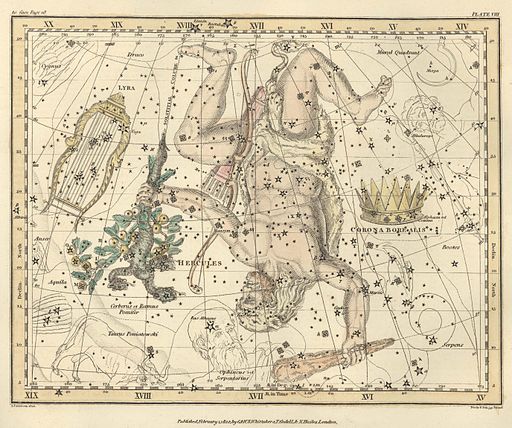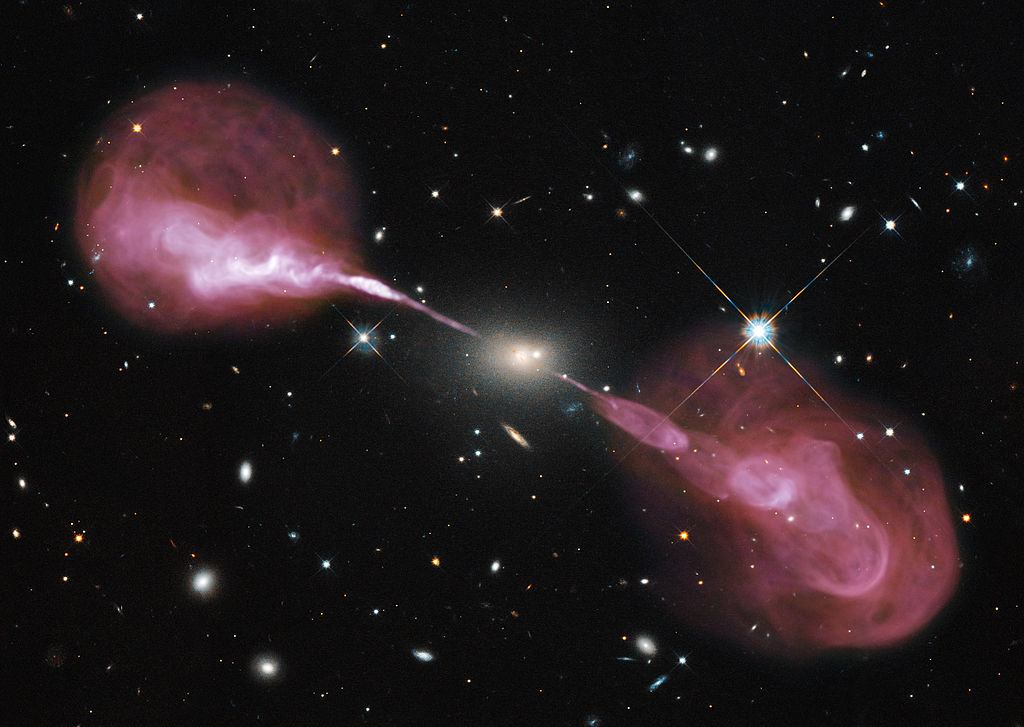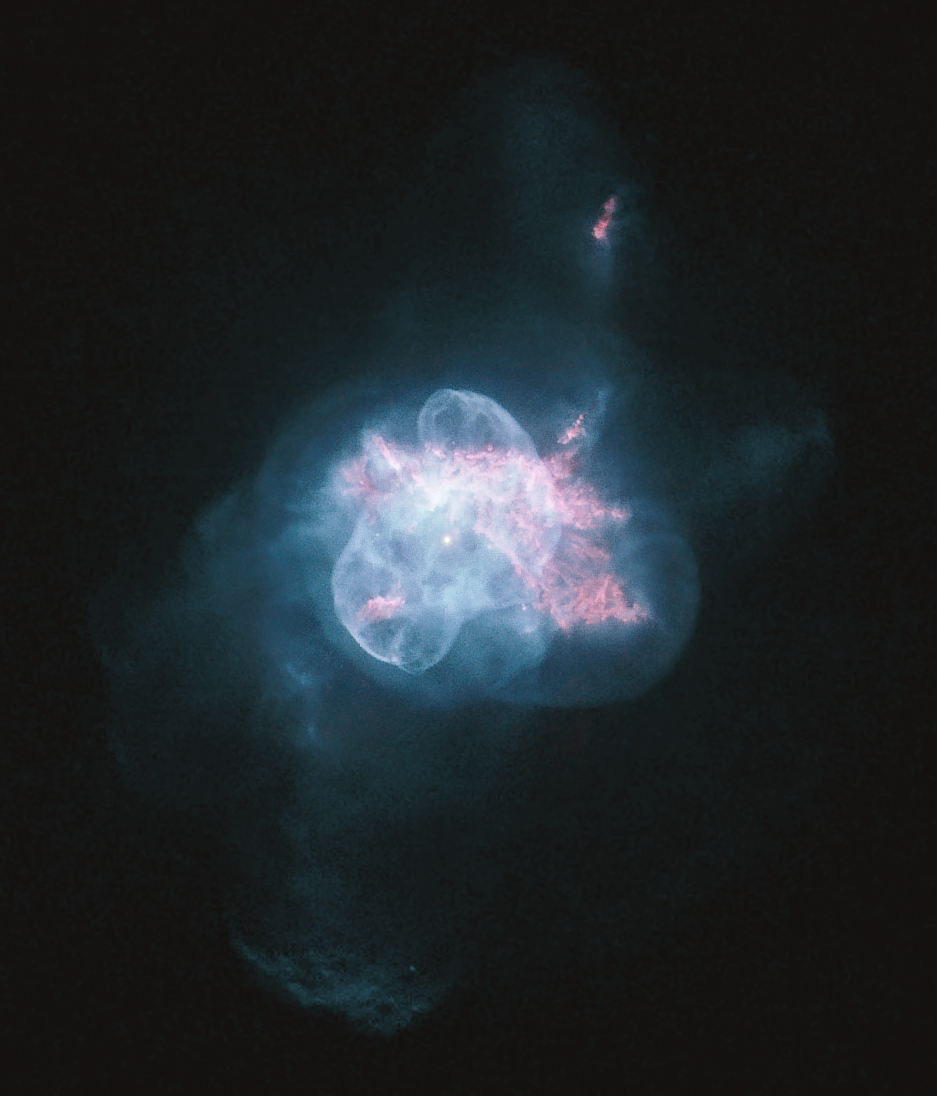
By IAU and Sky & Telescope magazine (Roger Sinnott & Rick Fienberg) [CC-BY-3.0], via Wikimedia Commons
"The Hero"

By IAU and Sky & Telescope magazine (Roger Sinnott & Rick Fienberg) [CC-BY-3.0], via Wikimedia Commons
Abbreviation: Her
Genitive: Herculis
Position: Northern Hemisphere
Best seen: July at 21:00
Constellation family: Hercules
Nearest constellations: Aquila, Boötes, Corona Borealis,
Draco, Lyra, Ophiuchus, Sagitta,
Serpens, and Vulpecula
Right ascension: 17.33h
Declination: 29.90°
Visible between latitudes: +90° and -50°
Square degrees: 1225
Luminary: Kornephoros (Beta Herculis)
Named stars: Kornephoros, Rasalgethi
Notable deep sky objects: M13 (NGC 6205), M92 (NGC 6341), Abell 39
Hercules is the fifth-largest constellation in the sky, although it is composed of relatively dim stars. It is best seen in July in the Northern Hemisphere.
Hercules contains M13, a globular cluster of approximately 300,000 stars that appears as a faint spot of light to the naked eye. It is considered to be one of the finest clusters in the northern hemisphere.
Four stars in Hercules (Eta, Pi, Epsilon, and Zeta Herculis) form an asterism called the Keystone. It is a roughly square arrangement of stars that denotes Hercules' pelvis and torso.

By Alexander Jamieson (United States Naval Observatory Library) [Public domain], via Wikimedia Commons
Hercules is the Roman name for the Greek hero Heracles. Heracles was named after his mother Hera, wife and sister of Zeus, although Heracles was actually the son of Zeus and a mortal woman named Alcmene. While Heracles' name translates to "the glory of Hera", Hera hated him for being the illegitimate son of Zeus and sent two snakes into his crib when he was a baby in an attempt to murder him. Heracles, however, proved his strength at an early age and killed both of the snakes with his bare hands.
Hera persisted in her attempts to thwart Hercules as he grew older. At one point, she made him insane to the point where he killed his wife and children, after which he was given twelve tasks—known as the Twelve Labors of Hercules—to complete as punishment for his actions. Four of the monsters Hercules had to face during his Twelve Labors are also represented as constellations: Cancer, Draco, Hydra, and Leo.
M13 (globular cluster):

By NASA, STScI, WikiSky (WikiSky's snapshot tool) [Public domain], via Wikimedia Commons
Abell 39 (planetary nebula):

By Adam Block/Mount Lemmon SkyCenter/University of Arizona [CC-BY-SA-3.0], via Wikimedia Commons
Hercules A galaxy (viewed in visible light and radio waves):

By NASA, ESA, S. Baum and C. O'Dea (RIT), R. Perley and W. Cotton (NRAO/AUI/NSF), and the Hubble Heritage Team (STScI/AURA) [CC-BY-3.0], via Wikimedia Commons
NGC 6050 and IC 1179 (interacting galaxies):

By NASA, ESA, the Hubble Heritage (STScI/AURA)-ESA/Hubble Collaboration, and K. Noll (STScI) [Public domain], via Wikimedia Commons
NGC 6210 (planetary nebula):

By Judy Schmidt [CC-BY-2.0], via Wikimedia Commons